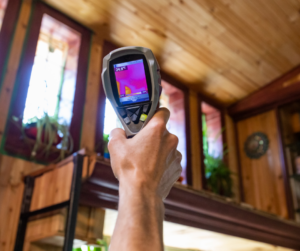 It’s not your imagination: Asthma is on the rise. There are probably a whole host of reasons why an estimated 5 million people were added to the asthma rolls over the past 10 years alone. That makes 25 million of us wheezing and struggling to breathe. Not a pretty picture.
It’s not your imagination: Asthma is on the rise. There are probably a whole host of reasons why an estimated 5 million people were added to the asthma rolls over the past 10 years alone. That makes 25 million of us wheezing and struggling to breathe. Not a pretty picture.
If you have an asthmatic parent or child in the home, you may need to address the root causes. Whatever the source, asthma can make life miserable and shorten a person’s life expectancy.
So what can you do? First, what are the triggers? It’s not as simple as we once believed. Dampness allows mold and bacteria to breed, and these irritants can trigger an asthma attack. But dry air, too— below 15% relative humidity— is now thought to trigger coughing because dry, mucus-less airways are more susceptible to irritation from pollen, dust, cat dander, etc.
Children Are Especially Vulnerable
You know you shouldn’t allow anyone to smoke in the house if there is an asthmatic patient around. Children are especially vulnerable, and second-hand smoke can affect their whole lives. And yet, yet— we know. You live in the real world, and it’s not always possible to control every aspect of it.
What you can do is buy a whole-home air cleaner like this one: http://www.comfortup.com/aprilaire-5000-electronic-air-cleaner. The Aprilaire air cleaner is designed to electronically charge and trap particles such as mold, bacteria, dust, viruses—and 80% of tobacco smoke particles.
Each situation is unique, and it’s best to analyze what’s going on in your household. How high is the Relative Humidity (RH)? The U.S. government recommends RH between 30% and 50%. Anything below 30% may be too dry for your mucus membranes. Humidity levels above 50% are prime breeding grounds for bacteria and mold.
Take into account the climate where you live. Is the neighborhood dusty? coastal? Are the winters long and dry? Also, your home construction matters. Some new houses are so tight that they don’t allow any air flow. As consultants will tell you, a house must be able to breathe. Because if the house can’t breathe . . . well, neither can you.
Once you’ve identified the triggers, it will be easier to prevent asthma attacks. You can get a humidifier if the air is too dry, and a dehumidifier for damp air. (Your air conditioner probably does a good-enough job during season.)
Although nobody knows why this disease is becoming so prevalent (it may have something to do with our lifestyles, which involve much more time indoors), we do know quite a bit about triggers. And we know how to control our Indoor Air Quality. So, as they say, it’s a start.
